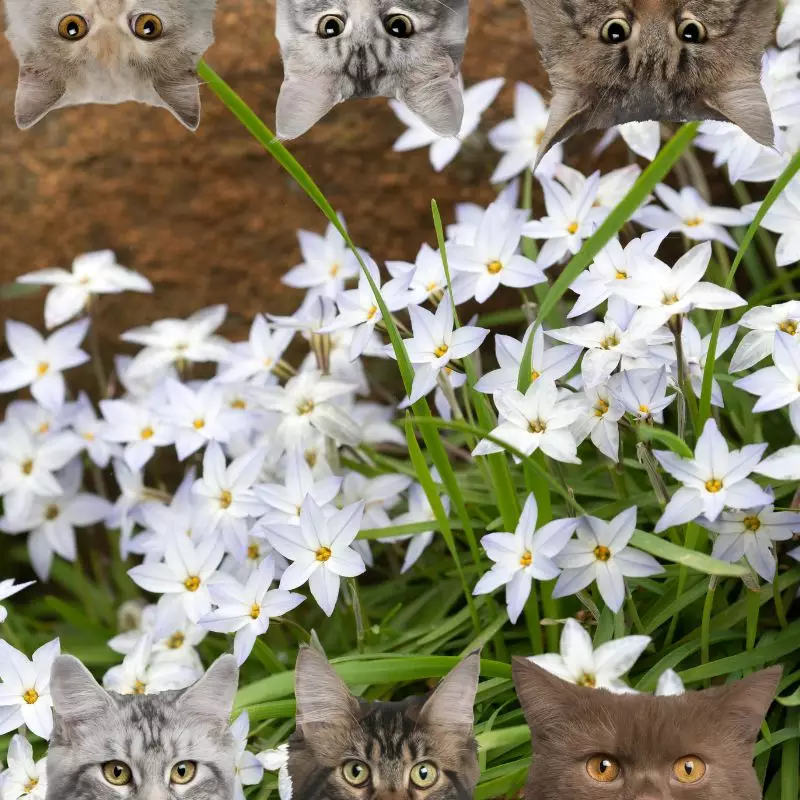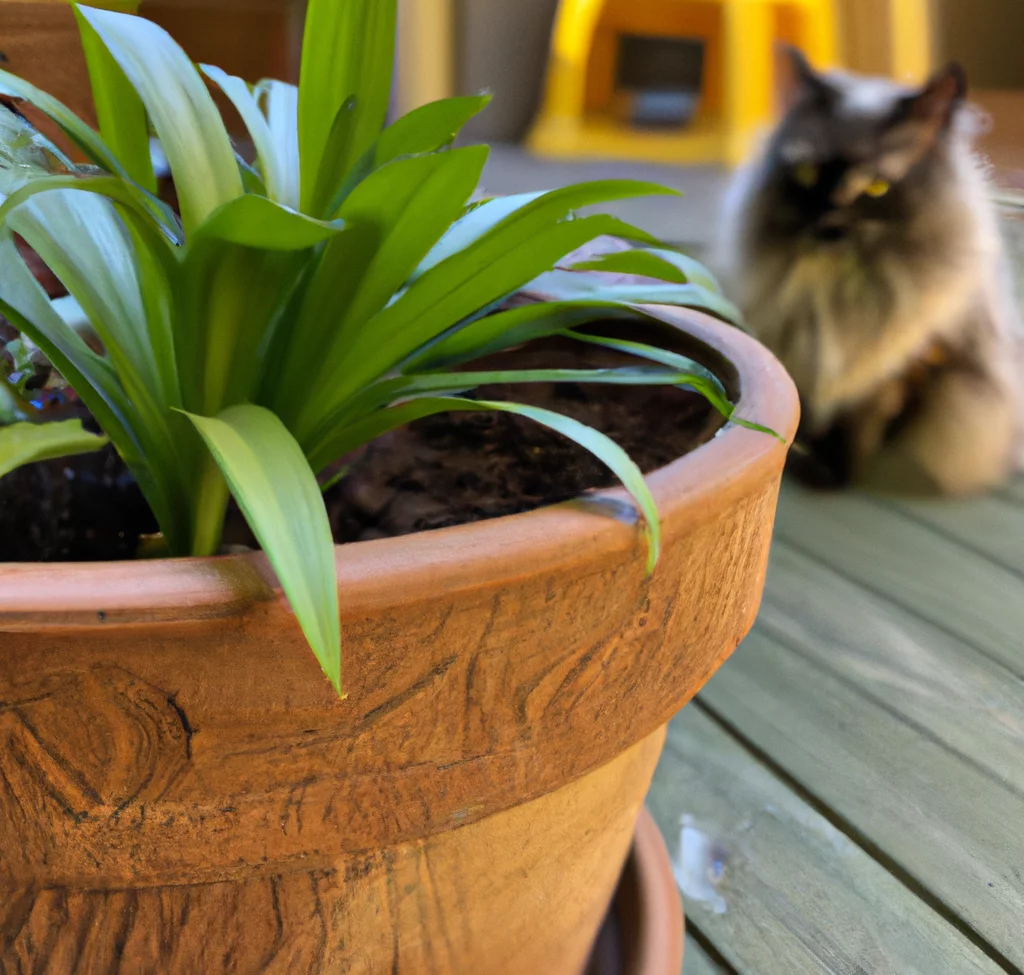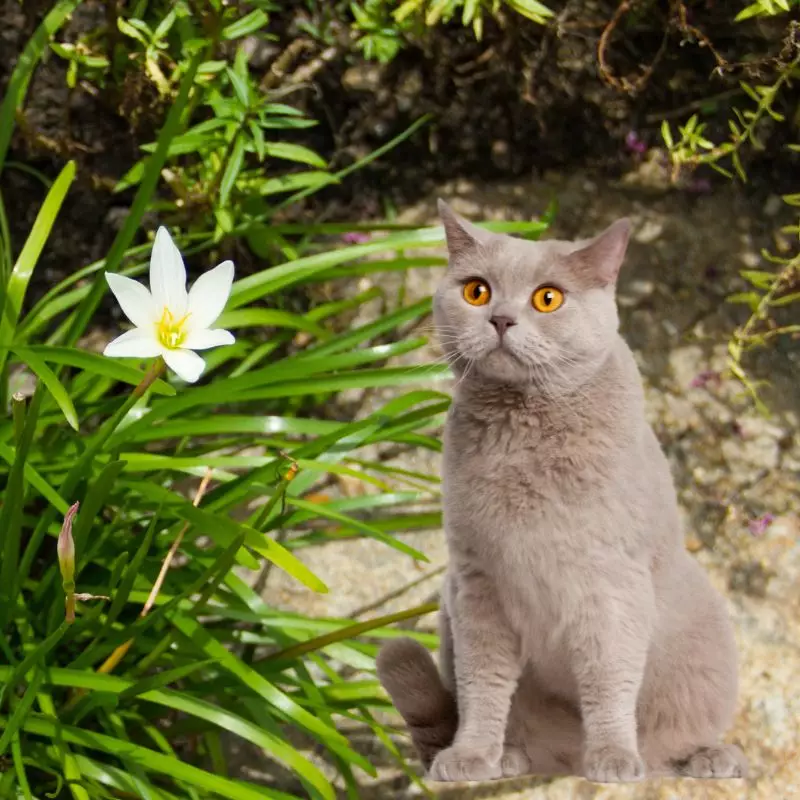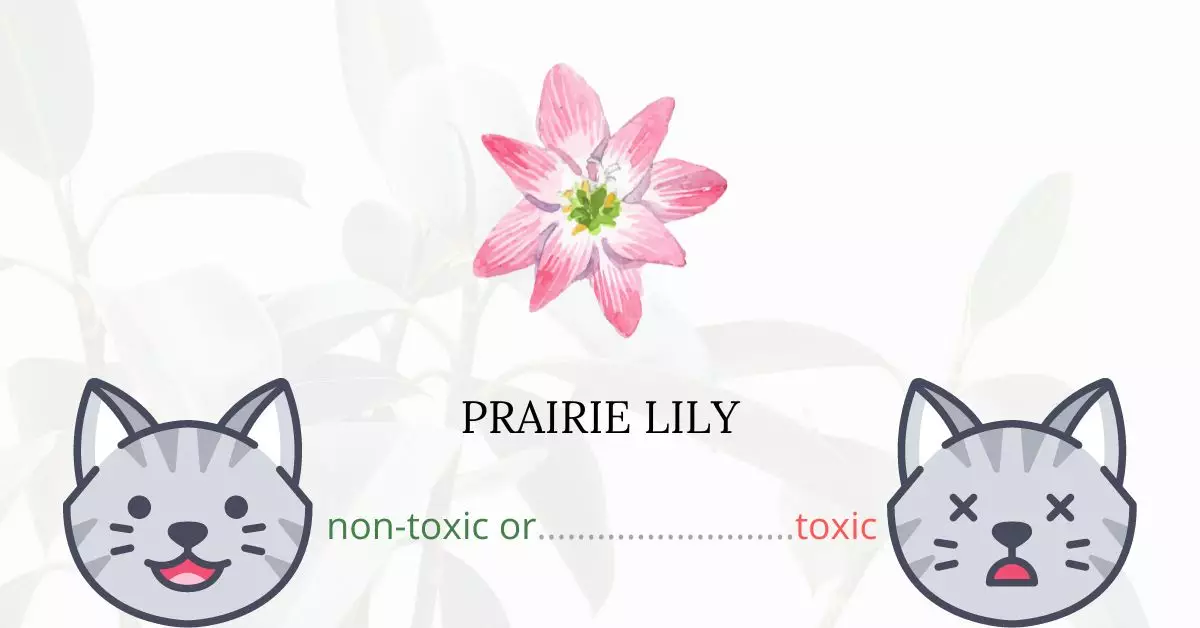Prairie lilies are not toxic for cats.
In fact, the ASPCA lists the Prairie lily as one of the plants safe for felines, despite many other lilies posing harm to them. This article was written in collaboration with a team of experienced DVMs (doctors of veterinary medicine). Their expert contributions, combined with in-depth research from high-authority sources like the ASPCA and PetMD, ensure the accuracy and relevancy of our information.
Thus, cat owners can confidently cultivate prairie lilies indoors without concerns about their pets’ safety. However, it’s essential to note that the safety of a plant doesn’t imply that cats should be encouraged to consume it freely. Always monitor your cat’s interactions with plants and discourage direct consumption.
Can Cats Eat Prairie Lily?

Compared to other lilies, prairie lilies present less danger to cats when consumed. It can cause modest symptoms including tissue irritation in the mouth, tongue, pharynx, and esophagus, while it isn’t entirely risk-free.
In general, it’s not a good idea to feed plants to cats. They are carnivores, thus their bodies aren’t designed to process a lot of plant material. Because of this, it is preferable for cats to stay away from all plants, even those that are not hazardous.
What is Prairie Lily?

A member of the amaryllis family, the Prairie lily is a bulb with delicate, fragrant white flowers. It makes a wonderful addition to a twilight garden because the flowers bloom in the dark and last for a few days. Usually, a day or two after a shower, the flowers start to bloom. They are spectacular, aromatic, and white when young, turning pink. Full sun is ideal for blooming, though they may take mild shade.
It can be used for naturalizing and tolerating mowing. It is native to grasslands and meadows in the western and south-central USA. Plant bulbs in well-drained soil at a depth of 2 inches. They disperse via seeds and offset bulbs.
Its other names are, Evening Rain Lily, Evening Star Rain Lily, Giant rain lily, and Hill Country Rain Lily.
Keeping Cats Away From Prairie Lily

Test out mustard and pepper repellents first. Both odors will be utterly repulsive to your cat, and maybe putting them close to your plant will be enough to keep them away. If you’re going to use mustard, dilute it with water first before spraying your plant with it.
With pepper, you will need to follow a similar procedure, but this time you can simply sprinkle pepper into the plant container to scare away cats. You might have to reapply the repellent every two days in both situations.
Plants to Avoid For Your Cats
If you are a cat owner and unsure if the plants growing in your yard are harmful to your cats, check out this list of toxic plants for cats. You can also check our list of non-toxic plants for cats.





